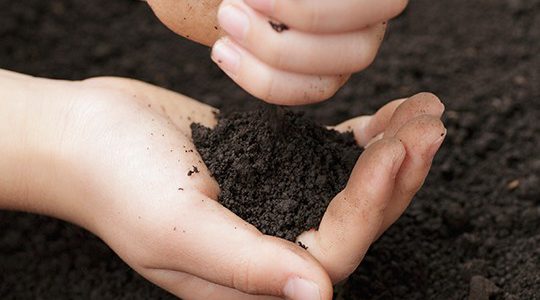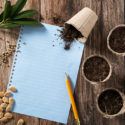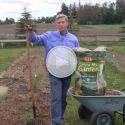2015 the International Year of Soils. If this comes as a surprise to you, no worries, you are not alone. It seems that most of us are keenly unaware of the value of our dirt (the good stuff) and I am here to help change that. On December 5th 2014, Jose Graziano de Silva, the Director General for the United Nations Food and Agriculture Organization deemed 2015, to be the International Year of Soils. When I learned this I said to myself, “This is an opportunity that is too good to resist.” You see, I learned many years ago that over 90% of my success in the garden hinged on one thing: the quality of the soil that I plant in. It goes without saying that my golden rule for a productive garden is, by extension, at the root of our success as a civilization. Perhaps it does not go without saying; after all, I have already stated that most of us are wholly unaware of the importance of soil. To kick off this topic, here are some useful statistics. Use them to show off your soil knowledge while gathered ‘round the water cooler on Monday morning:
- it takes up to 1,000 years for a centimetre (about half an inch) of new soil to be made naturally
- 33% of the worlds soils are ‘degraded’ due to our negligence and misuse
- 805 million people suffer malnutrition worldwide
- projected population growth requires that agriculture increase productivity by 60%
- 95% of all food comes from the soil (reminder: most of the animals that we use for human consumption feed on plant life)
- over one third of our food is wasted and over one half of all of our household waste could be composted to produce new soil
- there are more living organisms in one tablespoon of quality soil than there are humans on the face of the earth (over 7 billion)
- 2 hectares/4.9 acres of soil are sealed under expanding cities every minute worldwide
Uggh. This was not meant to depress you, but merely inform. Sobering statistics can inspire us to care more deeply about important issues. Soil ranks up there with climate change, the declining urban forest, and polluted oceans. It just hasn’t made the headlines to the same extent as the others. The Director General referred to soils as the “nearly forgotten resource” and called for more investment in sustainable soil management. Clearly we need to pay attention to how we use our soil. This calls into question the wisdom, for instance, of growing corn for use a fuel. When the same land can be used to help feed a hungry world, you have to wonder why we are choosing instead to feed the appetite of a large, fuel guzzling population. It is interesting to note that what goes on under the ground is far from simple. It is one big boiling kettle of microbes, bacteria, fungi, and tiny organisms. It is a jungle where the earthworm (all of which are not native to Canadian soil) is the king. It has fascinated me since first learning of soil’s complexity. We dig a hole, add some composted manure, and plant a tree or rose bush or heuchera. We water it and go indoors for another coffee and a muffin. Generally, I had not thought much about how the roots of my new plant intermingled with new and existing soil and how, over the fullness of time, new roots would develop and push their way through this cocktail of nutrients. In time, my plant would be anchored by the new roots and they would provide a conduit of moisture and nutrition that would sustain the top portion of the plant. I believe that most of us think very little about what goes on under the surface of the soil. And why should we: it is impossible to speculate on what the eye can’t see, so why bother? The purpose of setting one year aside to celebrate and educate during the International Year of Soils is to get us to stop and think about the meaning of life underground and what it means to us. And what does it mean? Our very sustenance depends on it.
- So what can we do of a meaningful nature that will make a difference? I have some suggestions: Compost. I know, most readers are using their green bins diligently and some (though not the majority) have a compost bin out of doors that actually gets filled from time to time. I urge you to take the activity of saving raw, green material, like food waste and fallen leaves, more seriously. The idea of composting went ‘mainstream’ over 20 years ago. At the time I wrote a book on the subject called ‘The Real Dirt’ with my friend Lorraine Johnson about backyard composting. Thanks to her thorough research, it was considered the best reference book of its kind and was used in some university curriculums across the country. But our fascination with the conversion of raw, natural material into usable soil by way of the compost bin has not overcome all of the objections to it. I urge you to learn more and help all of us to be more diligent about this. Details at www.compost.org
- Amend your soil with generous quantities of compost early in spring, before you plant. The organic gardener’s mantra says, ‘Feed the soil and the plants will take care of themselves’. True, to a large extent. If you provide lots of goodness at the root zone of all of your plants you will be amazed at how few insects and diseases you will experience. The Canadian Composting Council (CCC) has established new aggressive composting quality guidelines called: “Compost Quality Alliance (CQA)”. These guidelines are the most stringent standards in the industry. There is no better time of year than spring to take care of this ever important task. Amend garden soil with safe, regulated and certified compost. PREMIER® BIO-MAX® Composted Cattle/Steer Manure, Composted Shrimp Mix and Sheep Manure are fully composted and safe.
- Learn from farmers. Good farmers understand that they do not nurture plants so much as they foster good soil. The foundation of farming is to take good care of the soil and it will grow a great crop. To this end, they add generous quantities of naturally decomposed animal manures and ‘green crops’ to their land. They put back more nutrition than they take out. To do the reverse (take out more than you put into the soil) is what my farmer/brother-in-law calls ‘mining the land’ and it is as short-sighted as living exclusively on a diet of doughnuts and muffins only to be surprised that you are a candidate for a heart attack down the road.
For details about the International Year of Soils go to www.fao.org and follow the link.
Suggested Products
-
No suggested products found.



